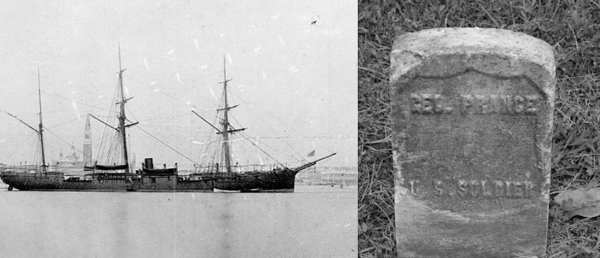
Th Medal of Honor Historical Society is unable to locate the grave of Civil War Veteran George Prance, who was on board the U.S.S. Ticonderoga during attacks on Fort Fisher, to update his gravestone to reflect his Medal of Honor status. (Photo: Dave Johnson)
The Mark Our Place Act, signed into law by President Biden on November 25, expands eligibility for VA-furnished grave markers to all Medal of Honor recipients, regardless of their service dates. Previously, only those who served after April 16, 1917, were eligible, limiting recognition for earlier recipients of the nation’s highest military decoration.
The Medal of Honor is awarded to U.S. Armed Forces Service Members who demonstrate extraordinary valor in combat. Established in 1861 during the Civil War, it is bestowed by the President on behalf of Congress. Over 3,500 Service Members have received the Medal of Honor since its creation.
Richard Hamilton, one of the earliest recipients, exemplifies the bravery recognized by this honor. As reported by Stars and Stripes, Hamilton, a Civil War Navy sailor, participated in a daring mission in 1864 to disable the Confederate ironclad CSS Abermarle. Despite his heroism, it wasn’t until 2024—143 years after his death—that his gravesite was marked to reflect his Medal of Honor status.
The new law ensures all Medal of Honor recipients can be commemorated appropriately. Representative Mike Bost, R-Ill., who led the legislation in the House, emphasized the importance of honoring every recipient’s legacy.
“A Service Member’s sacrifices should be timeless,” said Representative Morgan Luttrell, R-Texas.
The legislation removes restrictions meant to preserve historical grave markers but often left earlier recipients unrecognized. The VA now has the authority to provide markers, medallions, or replacement headstones to signify the recipient’s status, regardless of existing grave conditions or burial locations.
Although the legislation represents progress, some challenges remain. Many Medal of Honor recipients from earlier conflicts, such as the Civil War and Spanish-American War, are interred in private or historic cemeteries resistant to altering original grave markers. Ray Johnston, director of the Medal of Honor Historical Society, noted ongoing obstacles in securing recognition for recipients buried in such cemeteries.
For example, efforts to mark the grave of Civil War Veteran George Prance at Mountain View Cemetery in Oakland, California, have faced challenges. Johnston’s organization found a photo of the grave marked “Geo Prance, US Soldier,” but the cemetery cannot confirm its location. In cases where grave alterations are restricted, the Medal of Honor Historical Society has used privately funded flat markers to minimize disruption.
The VA reports that it is processing requests for Medal of Honor grave markers at undisclosed cemeteries following the new law. Arlington National Cemetery already provides special inscriptions for Medal of Honor recipients’ graves, including those awarded before 1917.
While the Mark Our Place Act recognizes the contributions of Service Members from conflicts such as the Civil War, the Indian Wars, and the Spanish-American War, advocates like Johnston stress the importance of ensuring all recipients are properly honored.
“The new law goes a long way in correcting past wrongs,” Johnston told reporters.













If the family, decendants, community, or wishes expressed in honorees last noterized will, do not want to be honored by such means (belonging to a pacifist community, etc) then these wishes should be honored.
“In cases where alterations are restricted, the Medal of Honor Historical Society has used privately funded flat markers to minimize disruption.” Does this mean that the deceased hero is going to be recognised, as the the Medal of Honor Historical Society desires have been given legal priority.